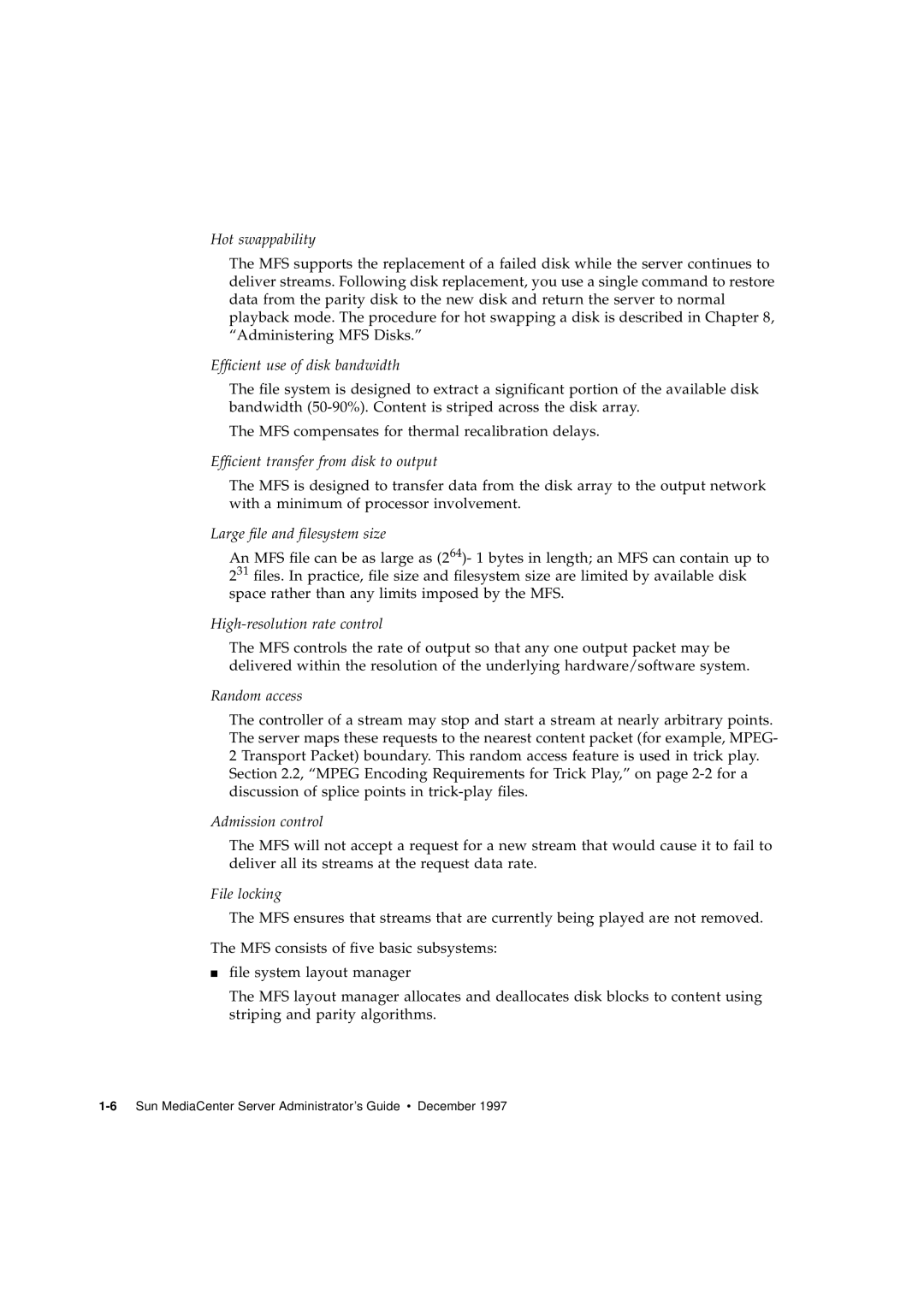Hot swappability
The MFS supports the replacement of a failed disk while the server continues to deliver streams. Following disk replacement, you use a single command to restore data from the parity disk to the new disk and return the server to normal playback mode. The procedure for hot swapping a disk is described in Chapter 8, “Administering MFS Disks.”
Efficient use of disk bandwidth
The file system is designed to extract a significant portion of the available disk bandwidth
The MFS compensates for thermal recalibration delays.
Efficient transfer from disk to output
The MFS is designed to transfer data from the disk array to the output network with a minimum of processor involvement.
Large file and filesystem size
An MFS file can be as large as (264)- 1 bytes in length; an MFS can contain up to 231 files. In practice, file size and filesystem size are limited by available disk space rather than any limits imposed by the MFS.
High-resolution rate control
The MFS controls the rate of output so that any one output packet may be delivered within the resolution of the underlying hardware/software system.
Random access
The controller of a stream may stop and start a stream at nearly arbitrary points. The server maps these requests to the nearest content packet (for example, MPEG- 2 Transport Packet) boundary. This random access feature is used in trick play.
Section 2.2, “MPEG Encoding Requirements for Trick Play,” on page
Admission control
The MFS will not accept a request for a new stream that would cause it to fail to deliver all its streams at the request data rate.
File locking
The MFS ensures that streams that are currently being played are not removed.
The MFS consists of five basic subsystems:
■file system layout manager
The MFS layout manager allocates and deallocates disk blocks to content using striping and parity algorithms.
